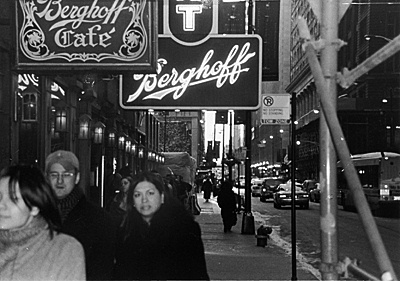All Nonfiction
- Bullying
- Books
- Academic
- Author Interviews
- Celebrity interviews
- College Articles
- College Essays
- Educator of the Year
- Heroes
- Interviews
- Memoir
- Personal Experience
- Sports
- Travel & Culture
All Opinions
- Bullying
- Current Events / Politics
- Discrimination
- Drugs / Alcohol / Smoking
- Entertainment / Celebrities
- Environment
- Love / Relationships
- Movies / Music / TV
- Pop Culture / Trends
- School / College
- Social Issues / Civics
- Spirituality / Religion
- Sports / Hobbies
All Hot Topics
- Bullying
- Community Service
- Environment
- Health
- Letters to the Editor
- Pride & Prejudice
- What Matters
- Back
Summer Guide
- Program Links
- Program Reviews
- Back
College Guide
- College Links
- College Reviews
- College Essays
- College Articles
- Back
Hollaback Girl MAG
I’m walking down the street on a bright August day when a car horn blares beside me.
“Hey gorgeous!” The deep voice sends chills down my spine. By now I know to keep looking straight ahead. Reacting will encourage him. I’m only fourteen.
“You in the pink, come here, beautiful.”
Out of the corner of my eye, I spot the man. He’s old enough to be my father but hangs out his car window staring at my legs like a hungry animal. I squirm.
I cut down a one-way street, hoping I’ve lost him. A long black car inches toward me. I know it’s him. I can feel his eyes lingering on me. There’s nowhere to run. He pulls up next to me, scanning me up and down. A smirk is on his face as he takes one hand off the wheel and moves it to his lap. My face burns red, and in my palms I can feel my heart pumping.
“I’m not going to hurt you. How old are you?”
“Eleven,” I lie.
His face falls. Slowly, he pulls away, but not before giving me a final lecherous glance.
Street harassment is defined as any unwanted, inappropriate, or threatening catcalling, whistling, or touching. According to Hollaback! (ihollaback.org), 70 percent to 99 percent of women have experienced street harassment at some point in their lives. Twenty-three percent reported having been touched, 20 percent had been followed, and 9 percent said they had been forced to do something sexual. Among men, 25 percent reported having been harassed; the majority are gay, bisexual, or transgender, with the most common form of harassment being homophobic slurs, according to Stop Street Harassment (StopStreetHarassment.org).
From being followed to being told “you look good to me,” and even being flashed, street harassment can make victims feel anxious and unsafe in their own neighborhoods. Still, many people claim that this street harassment is harmless fun.
Last year in Florida an adult man offered a 14-year-old girl $200 to have sex with him. When the girl declined, he grabbed her by the hair, forced her into his car, and choked her unconscious, then left her on the side of the road.
But it’s just harmless fun, right?
A man in Philadelphia was brutally assaulted after trying to defend a group of women from catcallers.
Does that sound like harmless fun?
“Street harassment,” says a woman in the documentary “Street Harassment: Sidewalk Sleazebags and Metro Molesters,” “is almost like a gateway drug to other more serious acts of violence.”
Some in our society use statements like “But she was dressed provocatively” and questions like “Why did she go out alone?” to defend the actions of street harassers. But this places the blame on the victim. Who you are, what you wear, or your sexual orientation should not impact your safety or comfort walking down the street.
Three years later, on another bright August day, nothing has changed. The catcalls, the honking, and the stares continue. I change my path to avoid the inevitable leers, but the feelings of discomfort and hostility remain.
All around the country, your sisters, cousins, mothers, and girlfriends face this harassment on a daily basis. Still think it’s harmless fun?

Similar Articles
JOIN THE DISCUSSION
This article has 1 comment.

0 articles 0 photos 1 comment